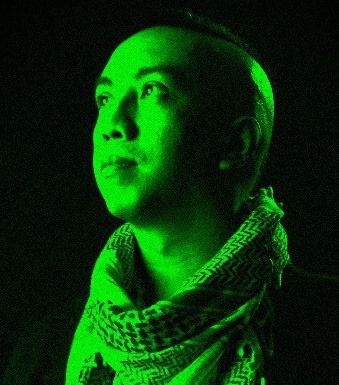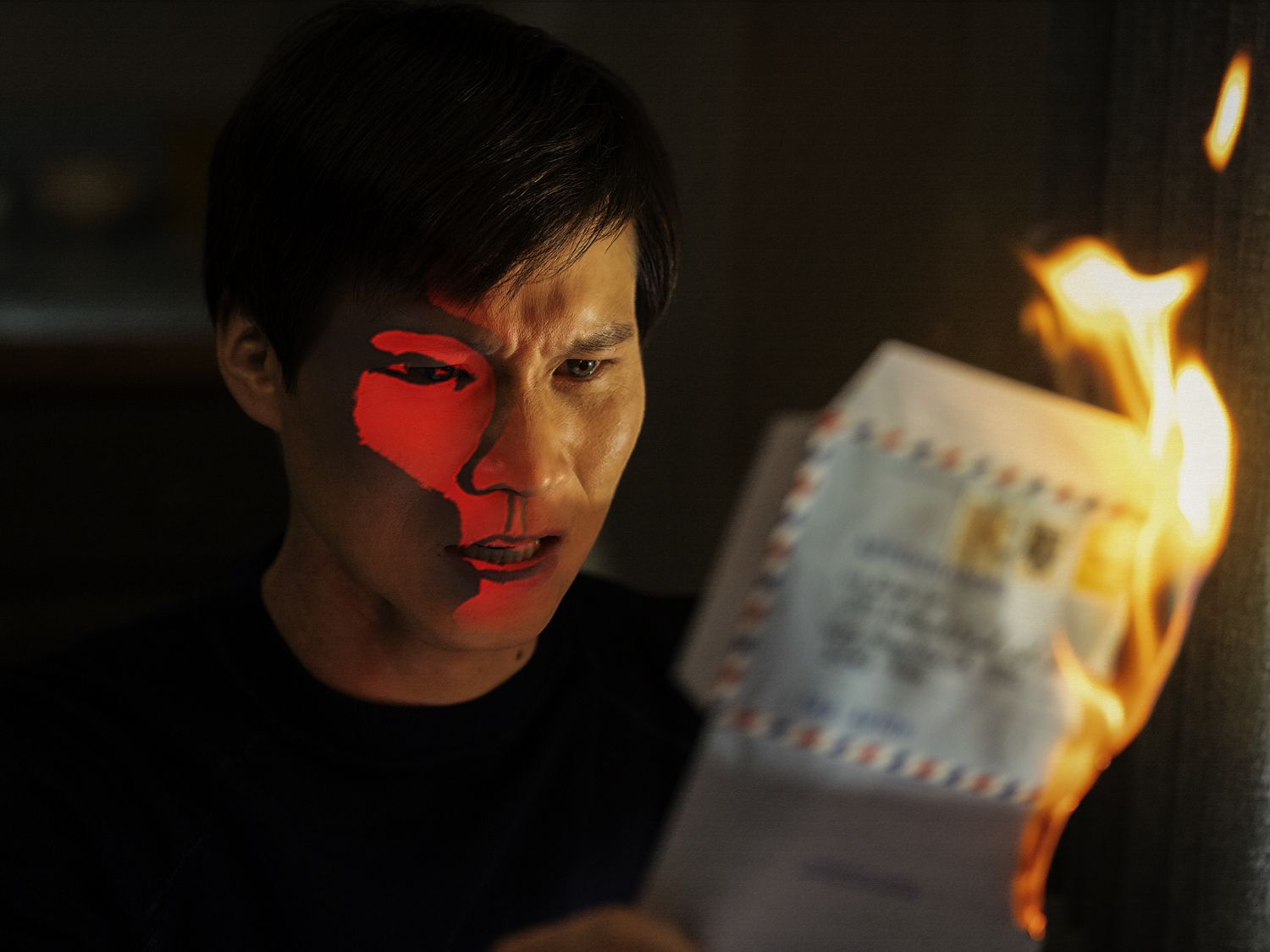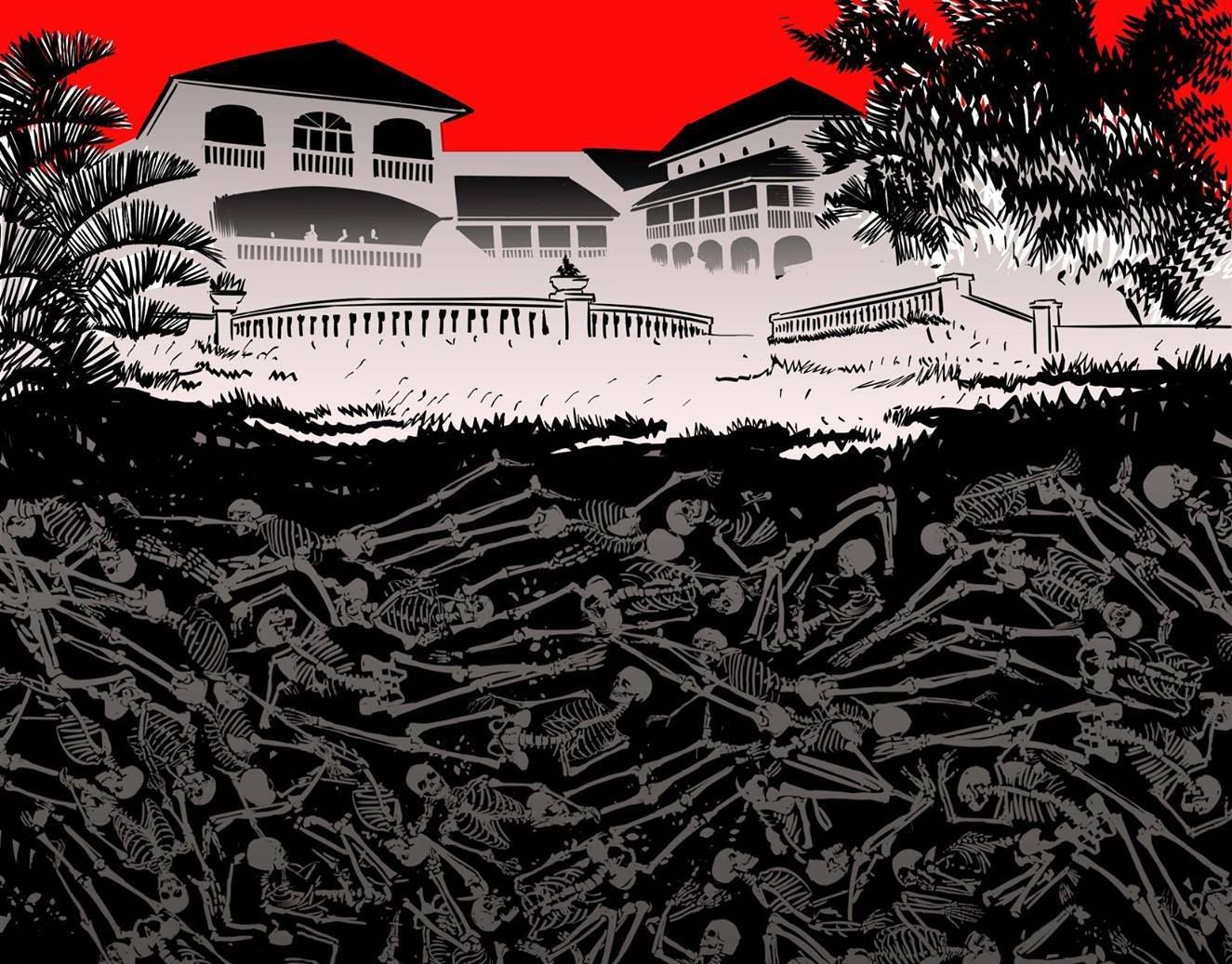![[object Object]](https://admin.thus.ph/uploads/Thus_Pope_Flicks_Cover_4bf1c78868.png)
The Best Films to Watch While Waiting for a New Pope
You don't even have to be a believer to be moved by these flicks involving religious leaders and their human struggles.

Karl R. De Mesa
2025-05-02T10:54:01.577Z
Pope Francis has passed away and in true to Catholic fashion, death is not the end of the story.
On May 7, 2025, the College of Cardinals will gather at Vatican City for a conclave that will elect the new leader of their faith and its approximately 1.4 billion followers all over the world. As of today, several contenders are in the running and among the ones with high chances of getting elected is Cardinal Luis Antonio Tagle, a Filipino who might continue the previous pope’s relatively progressive direction for the church.
This is where the drama comes in. On one side, traditionalists are clamoring against the election of people like Tagle to revert the Roman Catholic faith to its more conservative state. They’ve even gone so far as to use social media to come after him and his credentials. On the other side of the conflict, there are hopefuls longing to see a continuation of Francis’ work: a papacy that saw more important roles for women in the Vatican while supporting the human rights of queer people, migrants, the poor and people of non-Catholic beliefs.
At the end of the day, the conclave will not just be choosing their leader; they will also be choosing to exalt one who may play a consequential role in the ongoing struggle between the right and the left. Sounds familiar? If you’ve been invested in any of the presidential elections within recent years, perhaps it is.
It’s this kind of engaging dynamic that persists within the borders of the Vatican. And this is precisely why this state and the papacy have inspired many films worth watching while the world waits to meet the next pope.
You don’t have to be a believer to be moved by these films. After all, like the forces that govern the Vatican, they don’t just deal with the modern day implications of ancient texts; they also involve universal truths like human nature, the weight of power, and the very real capacity of death to begin new stories worth considering. (SPOILERS AHEAD.)

The Two Popes (2019)
“The Two Popes,” a biographical drama directed by Fernando Meirelles explores the cerebral nature of two priests debating spirituality and their place in the world.
We can’t forget that this is basically just a buddy movie. But when you put thespian heavyweights Jonathan Pryce and Anthony Hopkins in the roles of Popes Francis and Pope Benedict XVI respectively, something more than just a verbal tussle about theology and the nature of God happens.
Meirelles takes his deft hand and imbues all the polite conversation with depth and gravitas over snacks. But there’s also a lot to be said about the omission of issues the Church is guilty of hiding or altogether whitewashing. Despite all that, there’s much here to savor and chew on. A movie propelled by the convictions and acts of two old men out on a sunny day has no right to be this damn entertaining.

We Have A Pope (2011)
This must be one of the low key driest comedies I’ve watched in a long time.
In 2025, what was relevant in 2011 could be construed as not only dated but also pretty irrelevant. We’re now at odds with the rise of artificial intelligence and outright fascism in a former democratic role model. But the concerns of religion and its own mass of millennia-old rituals has its own momentum once it gets started.
So, in the Italian production “We Have a Pope” (originally “Habemus Papam,”) the question of the twist is run to a narrative conclusion: what if the elected Pope doesn't want the position?
Writer-director Nanni Moretti’s movie treats much of the beginning with an eye towards the silly: the cardinals like doddering school kids trying to (and failing) to ace a test during the conclave, a media circus begging for soundbites just feet away from a solemn procession.
So when a venerable old Italian cardinal with wallpaper charisma and even less spice than a Taco Bell burrito is elected, the whole mess threatens to collapse altogether. The new pope (Michel Piccoli) is all but bullied into accepting. He next suffers an all too audible and almost public anxiety breakdown right before he’s set to appear on the balcony for his first speaking engagement. The comedy of errors deepens when the cardinals try to get him into counselling and is put under the care of a psychiatrist (played by the director himself).
Professionally, the therapist suggests that a mental collapse and doing a runner might just be exactly the only logical thing to do when faced with the immense duty of becoming the Catholic pontiff. All too soon, the new pope gives his handlers the slip and disappears into Rome’s urban sprawl. While the end isn’t exactly a surprise, the tone and the meandering “let me find myself” plot makes this an interesting kind of mirthless comedy where the clown Pagliacci and the Pope might just have something in common if they ever stepped into the same bar.

The Agony and the Ecstasy (1965)
Here’s to the cruelties and ecstasies of the worst and best art commission in the medieval era.
Back in 1965, this movie got Oscar nomination plums for Best Color Cinematography, Color Costume Design, Color Art Direction, Original Music Score, and Sound. It’s easy to see why. This is one of those grand spectacle movies where the epic runtime (it’s even got an Intermission, for chrissake) tries its damn best to keep up with the equally epic subject matter.
With Rex Harrison as Pope Julius II and Charlton Heston as Michelangelo Buonarroti it even works out for the most part. But you can’t help but feel that there’s even more of an expectation to blow the critics and box office away with all the heavyweight acting on display. Such stress can’t help but fracture the movie places (the beats tend to overextend their welcome and Michaelangelo’s well known homosexuality is pretty much downplayed if not altogether buried). The premise is easy. I’ll even let Pope Julius II tell it, just like he sweet talked Mike into the job of a lifetime: "As you know, [this chapel] was built by my uncle, Pope Sixtus. That is why it is called the Sistine. You will correct the clumsiness of my uncle's architects. Your commission is to decorate the ceiling."
So, for the rest of the formidable run time (138 minutes, on point), as Michaelangelo wrestles with his artistic demons, quits and runs to the marble mine mountains, comes back and begs the pope for his Sistine commission back, and almost goes blind from so much paint, the pope is busy being a leader of the era. And popes back then weren’t as peacable as we know them now. Pope Julius II, for example, was a king with a state army in his own right. While he was leading wars, overseeing infrastructure, and brokering allegiances with other nobles of the era, he was also motivating his obstinate artist to complete the damn ceiling. Basically, Mike just took so damn long the pope almost died waiting.
Really, the beating heart of this movie is how the pope and the artist become good frenemies. So much so that their unfriendly ribbing and poking motivated the other to become better at their work. In one scene, it was Michaelangelo’s announcement that he would quit that got a very ill pope out of bed. He basically irritated the man so much he rose out of his sick sheets to beat the crap out of the obstinate painter.
At the end of it I was pretty curious to read Irving Stone’s 1961 novel, too.

Pope Joan (2009)
Ah, the adversities of medieval life. Not only that, the agony of being female in such a violent era. This movie caused a furor in the Church when it was released in the late aughts. Pretty much proving that priests will raise less of an objection to their brethren’s sexual crimes as long as the supposed legend of a female pope remains suppressed.
Still, there’s something to be said about a persistent idea. And while the filmmakers pretty much took Donna Wolfolk Cross’s story in her book to the screen, they also added a casting flourish by putting German actor Johanna Wokalek into the main role.
It’s the ninth century and, through a series of fortunate and unfortunate circumstances (including a Viking raid,) a woman finds herself a monk and, through her clever disguise and the snobbish thickness of her fellow priests, is able to rise through the ranks of the Vatican and eventually become elected into the papacy.
A female pope, you say? How could it even be conceived? Well, according to Cross’s book, there were very persistent rumors that in the ninth century, a talented priest with his healing hands was able to cure Pope Sergius of gout to become his personal physician. In the literal proximity of holy power, as such medieval courts operated back in the day, her great wisdom and intellect endeared her to the clergy too. Eventually, they put her name on the candidacy when Sergius passed. As pope, she eventually reigned for several years, only to be found out because she gave birth during—of all things—a papal procession. Her deception didn’t sit well with the Romans and she was torn apart by a vicious mob. Thereafter, church scholars conspired to erase her existence completely, omitting her from the history books and the “Liber Pontificalis” or the encyclopedic compilation of all the popes (so far.)
While the premise is intriguing enough, the actors involved do make the best of director Sonke Wortmann’s ponderously, bombastically toned movie. Best supporting performances go to John Goodman going totally ham as Pope Sergius, Iain Glenn as Joan’s abusive father, and David Wenham (of “Lord of the Rings” fame) being as bald-faced good guy as he can with his character Gerold—the literal knight in shining armor who took in the young Joan and becomes her love interest (also presumably the baby daddy to her aborted child.)
So, did a female pope really exist? The Roman Catholic Church denies this of course as do plenty of mainstream historians. But those who argue for Joan point out that there’s such a thing as the “sella stercoraria,” a wooden chair with a hole in the base. The hole is to test the genitals of the candidate during papal investiture ceremonies. Why? So that the cardinals and medics could ensure potential pontiffs were real dudes and not disguised gals.
Joan supporters also point to Dominican Jean de Mailly's chronicle of Metz (“Chronica Universalis Mettensis”) which summed up the Joan premise thus: “Concerning a certain Pope or rather female Pope, who is not set down in the list of popes or Bishops of Rome, because she was a woman who disguised herself as a man and became, by her character and talents, a curial secretary, then a Cardinal and finally Pope.”

Conclave (2024)
Really hands down, the best among this list. Its cinematography alone is grandly poetic, blowing the rest out of the water with mesmerizing angles and imagery by the French lensman Stephane Fontaine.
Based on the 2016 novel by Robert Harris, the book makes a great jump point for the pomp and circumstance, the clandestine praxis seizures and behind-the-scenes power plays that can happen when one pope dies and another must be chosen. Oh, there’s vote buying, cajoling, and bullying among the cardinals. There’s also espionage style discredit techniques where—in one scene—someone flew in the baby momma of one of the African cardinals so he could be taken out of the running.
Through it all, the acting forces of Ralph Fiennes (Cardinal Lawrence), Stanley Tucci (Cardinal Bellini), and Isabella Rosellini (Sister Agnes) breathe life into what must be the most exciting election of a new pontiff in fiction (much less real life.)
Cardinal Lawrence’s speech about doubt alone will shake many faithful to the core if only it had been delivered by an actual cardinal: “…There is one sin I have come to fear above all others: certainty. Certainty is the great enemy of unity. Certainty is the deadly enemy of tolerance. Even Christ was not certain at the end. ‘My God, My God, why have you forsaken me?’ he cried out in his agony at the ninth hour on the cross. Our faith is a living thing precisely because it walks hand in hand with doubt.”
To say that the plot twists are rich would be an understatement. How previously unknown cardinal Vincent Benitez (aptly performed by Mexican actor Carlos Diehz,) who was secretly named the Archbishop of Kabul (yep, Afghanistan,) comes up into the running and becomes the dark horse of the conclave would have been the basis of quite a few movies, already, putting studio execs into development fugue for days.
That a literal bomb goes off towards the end to signal how the real world must impinge on the peace of the traditionally cloistered election, that the priests can no longer shut out the issues of the rest of the globe is deeply, meaningfully symbolic. They live on the same planet as everyone else, hence their actions in it also affect others. The combo hit of Benitez being elected into the papacy then the discovery that he is an intersex is the height of fiction, yet absolutely apt metaphors nonetheless.
If you’re only going to watch one movie on this list, then make it director Edward Berger’s obra. Though he also did make 2022’s “All Quiet on the Western Front,” which is also a pretty cool war film.
On May 7, 2025, the College of Cardinals will gather at Vatican City for a conclave that will elect the new leader of their faith and its approximately 1.4 billion followers all over the world. As of today, several contenders are in the running and among the ones with high chances of getting elected is Cardinal Luis Antonio Tagle, a Filipino who might continue the previous pope’s relatively progressive direction for the church.
This is where the drama comes in. On one side, traditionalists are clamoring against the election of people like Tagle to revert the Roman Catholic faith to its more conservative state. They’ve even gone so far as to use social media to come after him and his credentials. On the other side of the conflict, there are hopefuls longing to see a continuation of Francis’ work: a papacy that saw more important roles for women in the Vatican while supporting the human rights of queer people, migrants, the poor and people of non-Catholic beliefs.
At the end of the day, the conclave will not just be choosing their leader; they will also be choosing to exalt one who may play a consequential role in the ongoing struggle between the right and the left. Sounds familiar? If you’ve been invested in any of the presidential elections within recent years, perhaps it is.
It’s this kind of engaging dynamic that persists within the borders of the Vatican. And this is precisely why this state and the papacy have inspired many films worth watching while the world waits to meet the next pope.
You don’t have to be a believer to be moved by these films. After all, like the forces that govern the Vatican, they don’t just deal with the modern day implications of ancient texts; they also involve universal truths like human nature, the weight of power, and the very real capacity of death to begin new stories worth considering. (SPOILERS AHEAD.)

The Two Popes (2019)
“The Two Popes,” a biographical drama directed by Fernando Meirelles explores the cerebral nature of two priests debating spirituality and their place in the world.
We can’t forget that this is basically just a buddy movie. But when you put thespian heavyweights Jonathan Pryce and Anthony Hopkins in the roles of Popes Francis and Pope Benedict XVI respectively, something more than just a verbal tussle about theology and the nature of God happens.
Meirelles takes his deft hand and imbues all the polite conversation with depth and gravitas over snacks. But there’s also a lot to be said about the omission of issues the Church is guilty of hiding or altogether whitewashing. Despite all that, there’s much here to savor and chew on. A movie propelled by the convictions and acts of two old men out on a sunny day has no right to be this damn entertaining.

We Have A Pope (2011)
This must be one of the low key driest comedies I’ve watched in a long time.
In 2025, what was relevant in 2011 could be construed as not only dated but also pretty irrelevant. We’re now at odds with the rise of artificial intelligence and outright fascism in a former democratic role model. But the concerns of religion and its own mass of millennia-old rituals has its own momentum once it gets started.
So, in the Italian production “We Have a Pope” (originally “Habemus Papam,”) the question of the twist is run to a narrative conclusion: what if the elected Pope doesn't want the position?
Writer-director Nanni Moretti’s movie treats much of the beginning with an eye towards the silly: the cardinals like doddering school kids trying to (and failing) to ace a test during the conclave, a media circus begging for soundbites just feet away from a solemn procession.
So when a venerable old Italian cardinal with wallpaper charisma and even less spice than a Taco Bell burrito is elected, the whole mess threatens to collapse altogether. The new pope (Michel Piccoli) is all but bullied into accepting. He next suffers an all too audible and almost public anxiety breakdown right before he’s set to appear on the balcony for his first speaking engagement. The comedy of errors deepens when the cardinals try to get him into counselling and is put under the care of a psychiatrist (played by the director himself).
Professionally, the therapist suggests that a mental collapse and doing a runner might just be exactly the only logical thing to do when faced with the immense duty of becoming the Catholic pontiff. All too soon, the new pope gives his handlers the slip and disappears into Rome’s urban sprawl. While the end isn’t exactly a surprise, the tone and the meandering “let me find myself” plot makes this an interesting kind of mirthless comedy where the clown Pagliacci and the Pope might just have something in common if they ever stepped into the same bar.

The Agony and the Ecstasy (1965)
Here’s to the cruelties and ecstasies of the worst and best art commission in the medieval era.
Back in 1965, this movie got Oscar nomination plums for Best Color Cinematography, Color Costume Design, Color Art Direction, Original Music Score, and Sound. It’s easy to see why. This is one of those grand spectacle movies where the epic runtime (it’s even got an Intermission, for chrissake) tries its damn best to keep up with the equally epic subject matter.
With Rex Harrison as Pope Julius II and Charlton Heston as Michelangelo Buonarroti it even works out for the most part. But you can’t help but feel that there’s even more of an expectation to blow the critics and box office away with all the heavyweight acting on display. Such stress can’t help but fracture the movie places (the beats tend to overextend their welcome and Michaelangelo’s well known homosexuality is pretty much downplayed if not altogether buried). The premise is easy. I’ll even let Pope Julius II tell it, just like he sweet talked Mike into the job of a lifetime: "As you know, [this chapel] was built by my uncle, Pope Sixtus. That is why it is called the Sistine. You will correct the clumsiness of my uncle's architects. Your commission is to decorate the ceiling."
So, for the rest of the formidable run time (138 minutes, on point), as Michaelangelo wrestles with his artistic demons, quits and runs to the marble mine mountains, comes back and begs the pope for his Sistine commission back, and almost goes blind from so much paint, the pope is busy being a leader of the era. And popes back then weren’t as peacable as we know them now. Pope Julius II, for example, was a king with a state army in his own right. While he was leading wars, overseeing infrastructure, and brokering allegiances with other nobles of the era, he was also motivating his obstinate artist to complete the damn ceiling. Basically, Mike just took so damn long the pope almost died waiting.
Really, the beating heart of this movie is how the pope and the artist become good frenemies. So much so that their unfriendly ribbing and poking motivated the other to become better at their work. In one scene, it was Michaelangelo’s announcement that he would quit that got a very ill pope out of bed. He basically irritated the man so much he rose out of his sick sheets to beat the crap out of the obstinate painter.
At the end of it I was pretty curious to read Irving Stone’s 1961 novel, too.

Pope Joan (2009)
Ah, the adversities of medieval life. Not only that, the agony of being female in such a violent era. This movie caused a furor in the Church when it was released in the late aughts. Pretty much proving that priests will raise less of an objection to their brethren’s sexual crimes as long as the supposed legend of a female pope remains suppressed.
Still, there’s something to be said about a persistent idea. And while the filmmakers pretty much took Donna Wolfolk Cross’s story in her book to the screen, they also added a casting flourish by putting German actor Johanna Wokalek into the main role.
It’s the ninth century and, through a series of fortunate and unfortunate circumstances (including a Viking raid,) a woman finds herself a monk and, through her clever disguise and the snobbish thickness of her fellow priests, is able to rise through the ranks of the Vatican and eventually become elected into the papacy.
A female pope, you say? How could it even be conceived? Well, according to Cross’s book, there were very persistent rumors that in the ninth century, a talented priest with his healing hands was able to cure Pope Sergius of gout to become his personal physician. In the literal proximity of holy power, as such medieval courts operated back in the day, her great wisdom and intellect endeared her to the clergy too. Eventually, they put her name on the candidacy when Sergius passed. As pope, she eventually reigned for several years, only to be found out because she gave birth during—of all things—a papal procession. Her deception didn’t sit well with the Romans and she was torn apart by a vicious mob. Thereafter, church scholars conspired to erase her existence completely, omitting her from the history books and the “Liber Pontificalis” or the encyclopedic compilation of all the popes (so far.)
While the premise is intriguing enough, the actors involved do make the best of director Sonke Wortmann’s ponderously, bombastically toned movie. Best supporting performances go to John Goodman going totally ham as Pope Sergius, Iain Glenn as Joan’s abusive father, and David Wenham (of “Lord of the Rings” fame) being as bald-faced good guy as he can with his character Gerold—the literal knight in shining armor who took in the young Joan and becomes her love interest (also presumably the baby daddy to her aborted child.)
So, did a female pope really exist? The Roman Catholic Church denies this of course as do plenty of mainstream historians. But those who argue for Joan point out that there’s such a thing as the “sella stercoraria,” a wooden chair with a hole in the base. The hole is to test the genitals of the candidate during papal investiture ceremonies. Why? So that the cardinals and medics could ensure potential pontiffs were real dudes and not disguised gals.
Joan supporters also point to Dominican Jean de Mailly's chronicle of Metz (“Chronica Universalis Mettensis”) which summed up the Joan premise thus: “Concerning a certain Pope or rather female Pope, who is not set down in the list of popes or Bishops of Rome, because she was a woman who disguised herself as a man and became, by her character and talents, a curial secretary, then a Cardinal and finally Pope.”

Conclave (2024)
Really hands down, the best among this list. Its cinematography alone is grandly poetic, blowing the rest out of the water with mesmerizing angles and imagery by the French lensman Stephane Fontaine.
Based on the 2016 novel by Robert Harris, the book makes a great jump point for the pomp and circumstance, the clandestine praxis seizures and behind-the-scenes power plays that can happen when one pope dies and another must be chosen. Oh, there’s vote buying, cajoling, and bullying among the cardinals. There’s also espionage style discredit techniques where—in one scene—someone flew in the baby momma of one of the African cardinals so he could be taken out of the running.
Through it all, the acting forces of Ralph Fiennes (Cardinal Lawrence), Stanley Tucci (Cardinal Bellini), and Isabella Rosellini (Sister Agnes) breathe life into what must be the most exciting election of a new pontiff in fiction (much less real life.)
Cardinal Lawrence’s speech about doubt alone will shake many faithful to the core if only it had been delivered by an actual cardinal: “…There is one sin I have come to fear above all others: certainty. Certainty is the great enemy of unity. Certainty is the deadly enemy of tolerance. Even Christ was not certain at the end. ‘My God, My God, why have you forsaken me?’ he cried out in his agony at the ninth hour on the cross. Our faith is a living thing precisely because it walks hand in hand with doubt.”
To say that the plot twists are rich would be an understatement. How previously unknown cardinal Vincent Benitez (aptly performed by Mexican actor Carlos Diehz,) who was secretly named the Archbishop of Kabul (yep, Afghanistan,) comes up into the running and becomes the dark horse of the conclave would have been the basis of quite a few movies, already, putting studio execs into development fugue for days.
That a literal bomb goes off towards the end to signal how the real world must impinge on the peace of the traditionally cloistered election, that the priests can no longer shut out the issues of the rest of the globe is deeply, meaningfully symbolic. They live on the same planet as everyone else, hence their actions in it also affect others. The combo hit of Benitez being elected into the papacy then the discovery that he is an intersex is the height of fiction, yet absolutely apt metaphors nonetheless.
If you’re only going to watch one movie on this list, then make it director Edward Berger’s obra. Though he also did make 2022’s “All Quiet on the Western Front,” which is also a pretty cool war film.



